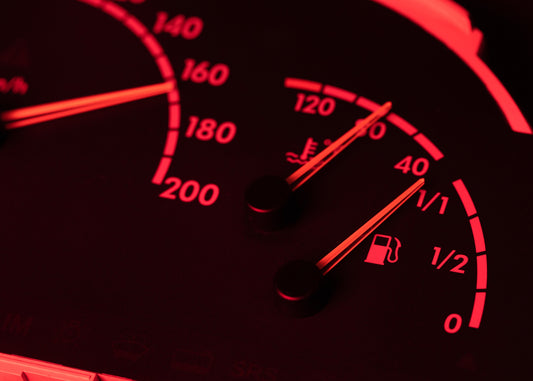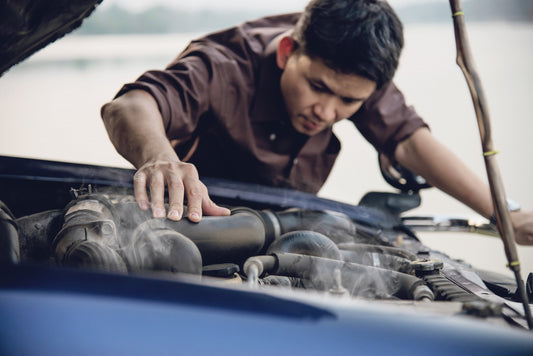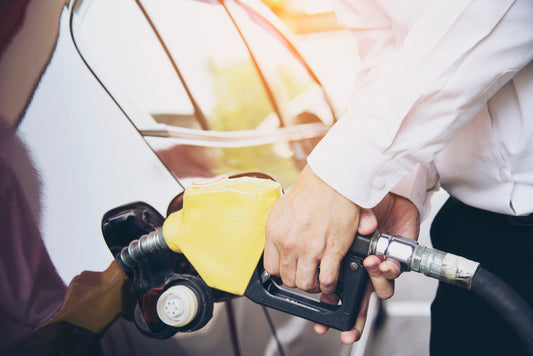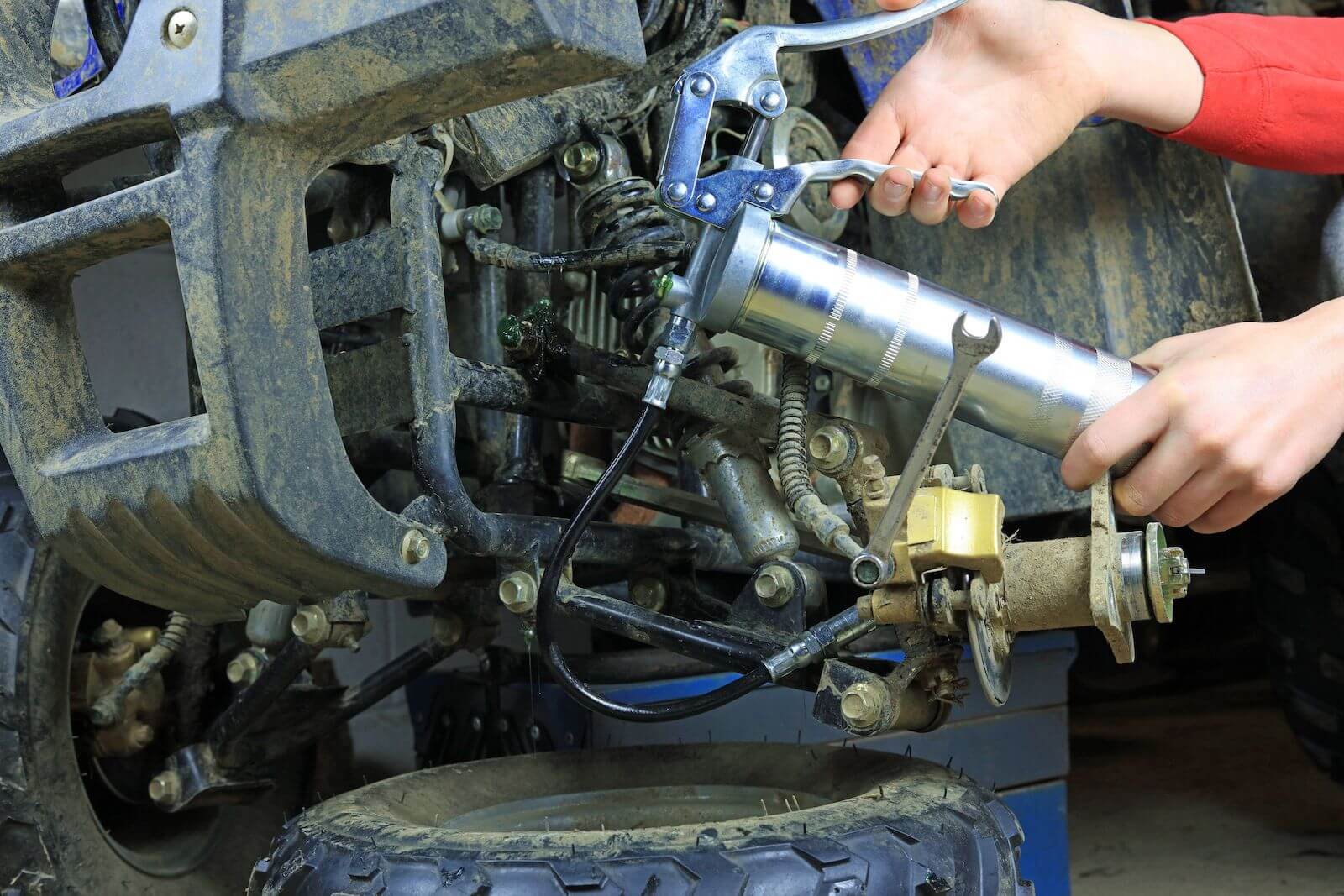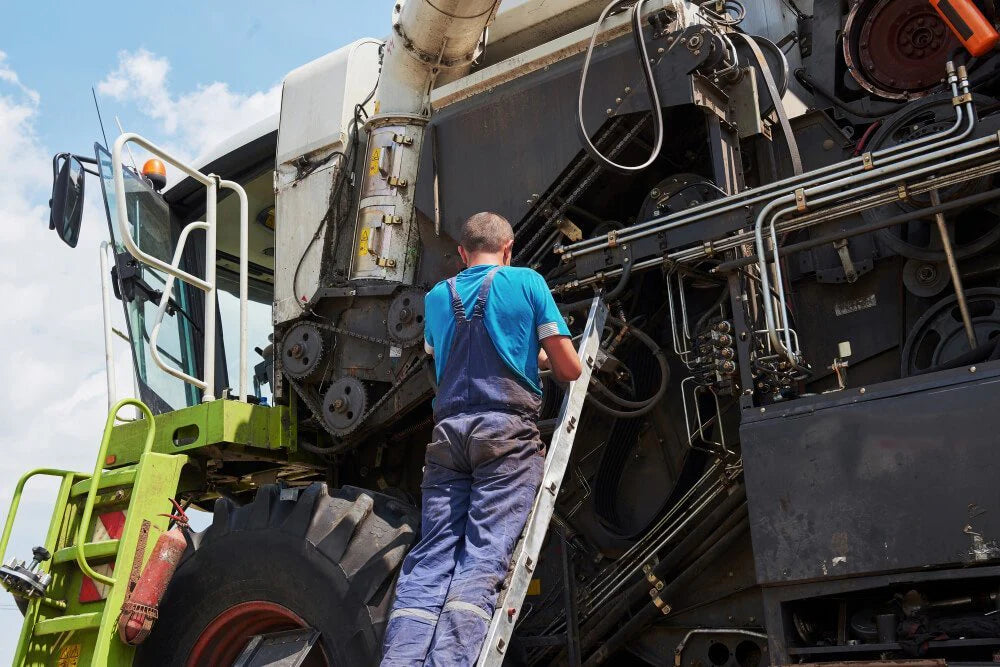One of the most useful tools a homeowner or hobby farm owner can own is a trailer. Whether you are looking to move around equipment like mowers or compact tractors or want to stop asking “will it fit in my SUV” at the lumber store, trailers can make life a lot easier. But while trailers are extremely useful, they can be extremely dangerous if used improperly.
To make sure you are utilizing your trailer correctly we put together a list of “Must Know Tips” and safety precautions.
1. Safety starts at hook up
Hooking up the trailer correctly is the first step to having a safe hauling experience; go wrong at this stage and it is going to go wrong on the road.

- Make sure the trailer hitch is locked onto the ball or hitch of your vehicle. Double-check this by lifting on the trailer hitch-It SHOULD NOT lift off. After ensuring the hitch is latched correctly make sure the safety pin or device is engaged to prevent the hitch from uncoupling accidentally during use.
- Make sure the safety chains are attached and are crossed at least once. It is important for the safety chains to be crossed because it creates a cradle for the trailer hitch in the event the hitch uncouples from the ball. Additionally, crossing the chains helps stabilize the trailer in the event that the trailer becomes unhooked.
- Make sure to hook up the lights. Ever been walking down the street behind a teenager glued to their phone to the latest viral video sensation? They wander, wind, make sudden changes, get off track, and usually bump into people. Basically, a trailer without lights. When trailer lights aren’t working the people around you do not indicate what you are doing, and the result can be an accident. So, plug in your lights and make sure they are working.
2. Make sure you are operating under pressure
Ok, there shouldn’t be any added pressure to driving with a trailer, but you should make sure your vehicle and trailer tires have the right pressure!
- Vehicle tire pressure should be 32-35psi, confirm by checking your owner’s manual. Towing a trailer means more weight on your vehicle so if your tires are low it could be dangerous for you on the road. Also, check your tire pressure before hauling anything.
- Trailer tire pressure should be between 50 and 60psi, again, confirm by checking your owner’s manual. Trailer tires have a lot of pressure in them because they are made to be towed and do not need traction, only stability. Having the correct tire pressure means low drag, less friction, and easy pulling so double-check the pressure before hitting the road.
3. Load your trailer correctly
When loading a trailer, you need to properly distribute the weight of the load between the trailer and the vehicle pulling the trailer.

- It’s all about balance. Too much weight on the vehicle could overload the vehicle and cause damage. Too much weight on the trailer could result in the vehicle not having enough traction to pull and stop the load.
- Free Fact: Most trailer accidents are caused by improper loading where the weight is too far behind the axle of the trailer. When most of the weight is behind the trailer’s axle it will lift the vehicle pulling the trailer. This causes extreme traction loss and causes “fishtailing” between the vehicle and trailer.
- Brakes on and chock the wheels. When driving something on a trailer to be hauled, ensure the trailer is properly secured to the vehicle and that the parking brake is ON. It is also a good idea to chock the wheels on the trailer to prevent any unwanted movement.
4. Secure your load
Strapping down the load you are hauling is crucial. It prevents the load from moving during transit and from falling or blowing off the trailer. Also, it keeps the load on the trailer which is important in the event of an accident or sudden braking. You don’t want what is on the trailer flying into the rear of your vehicle. Get good-quality straps or chains and use them!
5. When you finally hit the road, remember that with a trailer you are operating a longer, heavier vehicle
Stopping time, turning radius, and vehicle stability all change when pulling a trailer, so you need to adjust.

- It takes longer to stop. Because a trailer adds weight to the vehicle it will increase the time and distance it takes to stop. Even if the trailer has breaks you will need to make sure they are properly adjusted so you can stop at a reasonable distance.
- Wide turns. Ever see how semi-drivers swing wide to make the corner? You will also need to adjust how you take a corner to prevent hopping up on the curb or hitting something.
- When you hit a bump, so does the trailer. It is important to remember that with every bump you hit or if you stray onto the shoulder of the road the trailer is going to follow. When the trailer hits the bump or shoulder it is going to affect your vehicle and your vehicle’s stability. Your vehicle will also be more affected by the wind when you are pulling a trailer. So, think ahead, pay attention, and keep your eyes on the road.
One of the best practices with towing and trailer use is to develop a routine. Park your trailer in the same place, hook it up the same every time (ie. Hitch, safety chains, lights, lift and secure the jack, check lights, go), and listen and feel how the trailer pulls. If something sounds wrong, pulls on the vehicle hard or differently you need to stop and give everything a “once over” check.
Remember, you and your family and friends are more important than any cargo you will ever haul so be safe, slow down, and stay focused.


